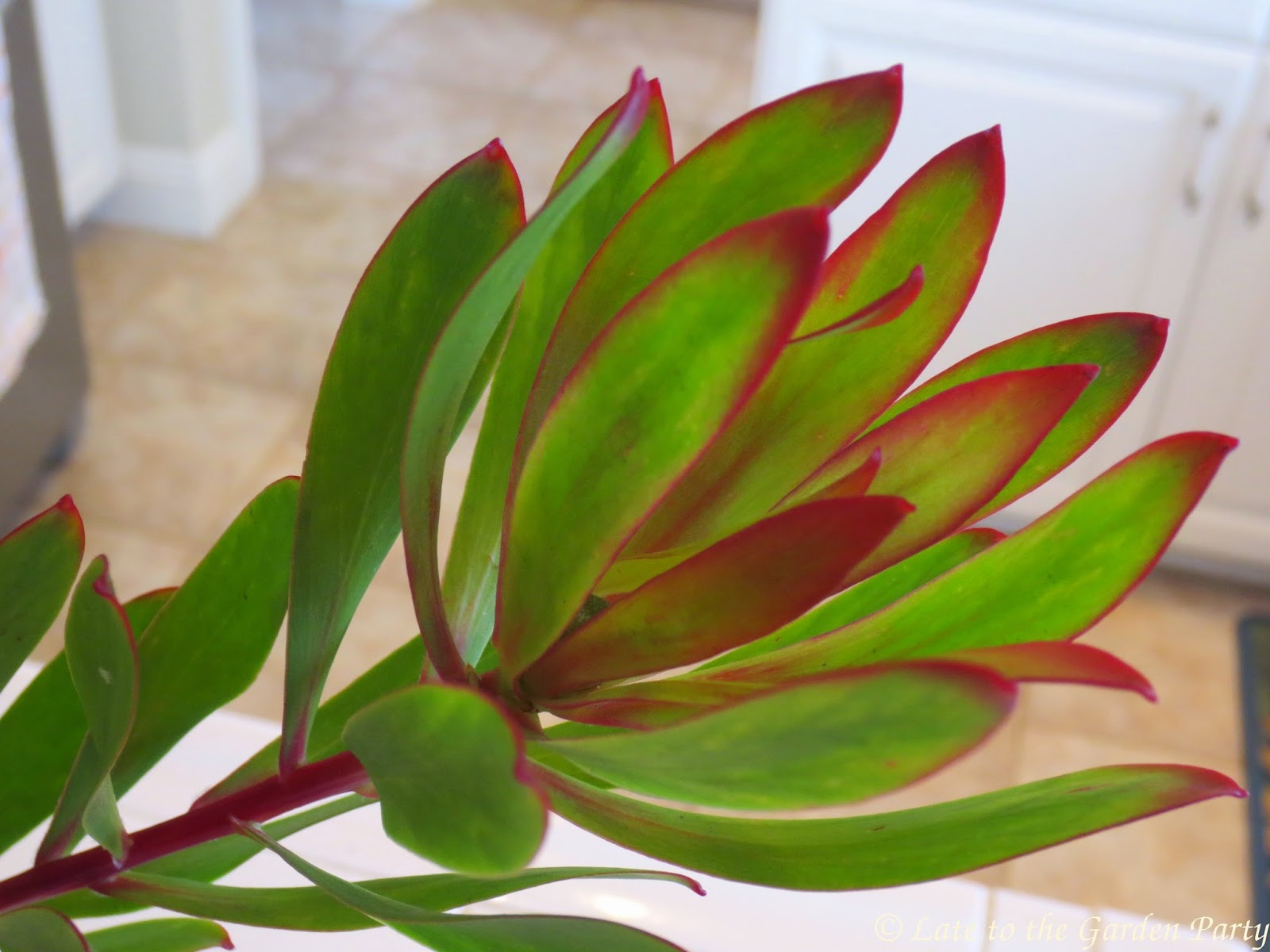The friend I joined on a
6-nursery trek through San Diego County in October and I took another trip last Saturday. We'd planned to visit 3 or 4 nurseries but only made it to 2, which was entirely my fault. I spent so long at the first nursery,
Seaside Gardens in Carpinteria, we didn't have time to make the other stops we'd planned in Santa Barbara County without sacrificing our plan to swing by
Sperling Nursery in Calabasas on the way home. Still, I managed to fill the trunk and backseat of my friend's car. In my defense, I do have a lot of area to fill now that our front yard is finally (mostly) ready for planting. I'll provide an update on the progress my husband and I've made there in the near future but, for now, I thought I'd share the highlights of last Saturday's trip.
I've posted photos of Seaside Gardens
before but there's always something new to see. Half the 3-acre nursery is devoted to a demonstration garden, which is worth a visit all by itself. I started in the Australian area and meandered through the adjoining South African and Mediterranean areas.
![]() |
| Unspecified variety of Banksia |
![]() |
| I'm not a palm aficionado but I stopped in my tracks when I saw this one, which I think must be Bismarckia nobilis |
![]() |
| There were several impressive Duranta repens grown as small trees. This one had a mass of Tagetes lemmonii at its feet. |
![]() |
| The garden has a large group of mature Leucadendron, underplanted with Osteospermum |
![]() |
| I think most of these were Leucadendron 'Safari Sunset' - who knew they could get that big? |
![]() |
| Lomandra longifolia, which I've used extensively in my own garden as a grass substitute |
![]() |
| The most beautiful mass planting of Russelia equisetiformis I've ever seen anywhere |
Next up was the succulent and desert plants area.
![]() |
| The sun was high in the sky so my photos are over-exposed but the view is still glorious |
![]() |
| Aloes were in bloom everywhere - I think this one is A. arborescens |
![]() |
| Aloe saponaria |
![]() |
| Aloe wickensii |
![]() |
| Ponytail palms (Beaucarnea recurvata)? |
![]() |
| Cotyledon orbiculata (aka Pig's Ear) |
![]() |
| Dasylirion longissimum |
![]() |
| A mass planting of Kalanchoe (no ID) |
I checked out the grasses too.
![]() |
| I loved this low-growing grass, Tripsacum floridana, but it wasn't available for sale |
![]() |
| These tall grasses looked wonderful in the sun |
There were also lots of interesting plants for sale, including:
![]() |
| Grevillea 'Little Honey' |
![]() |
| Grevillea 'Long John,' which is said to be similar to the smaller G. 'Bonfire' I planted in my garden a few months ago |
![]() |
| Grevillea 'Ned Kelly' - mine hasn't yet bloomed |
![]() |
| Grevillea 'Robyn Gordon,' which is similar to the G. 'Superb' in my garden |
![]() |
| I was very tempted by this Phylica pubescens until I saw the $400 price tag |
I was on the look-out for
Grevillea 'Peaches and Cream,' which Seaside didn't have; however, I managed to pick up a dozen small succulents and a half-dozen other plants before we left. After lunch, we drove back south and stopped at another of my favorite nurseries, Sperling, in Calabasas. I didn't take many photos there - I was too busy plant shopping. In preparing this post, I discovered that the
Sperling property is up for sale, a prospect that I've feared since I heard that the founder had passed away. I'm very afraid that the 10+ acre property could be sold to a developer, which will be deeply disappointing as this is a truly great nursery.
![]() |
| I did make a quick round of the gift shop, a place I rarely get to when visiting Sperling |
![]() |
| If I didn't have my husband hard at work laying paving stones in our front yard, I'd ask him to make me a replica of these wooden deer |
![]() |
| And I took note of a new collection of small-sized Agave specimens, 2 of which came home with me |
That's it for Saturday's jaunt, which lightened my pocketbook but produced a haul of 35 plants (not including 4 my friend sent home with me). Since Saturday, I've spent all my free moments planting but still have a lot left to get in the ground ahead of the rain storm forecasters are predicting for early next week. I'll share photos of some of the new additions soon.
All material
© 2012-2014 by Kris Peterson for Late to the Garden Party













































































































































































































